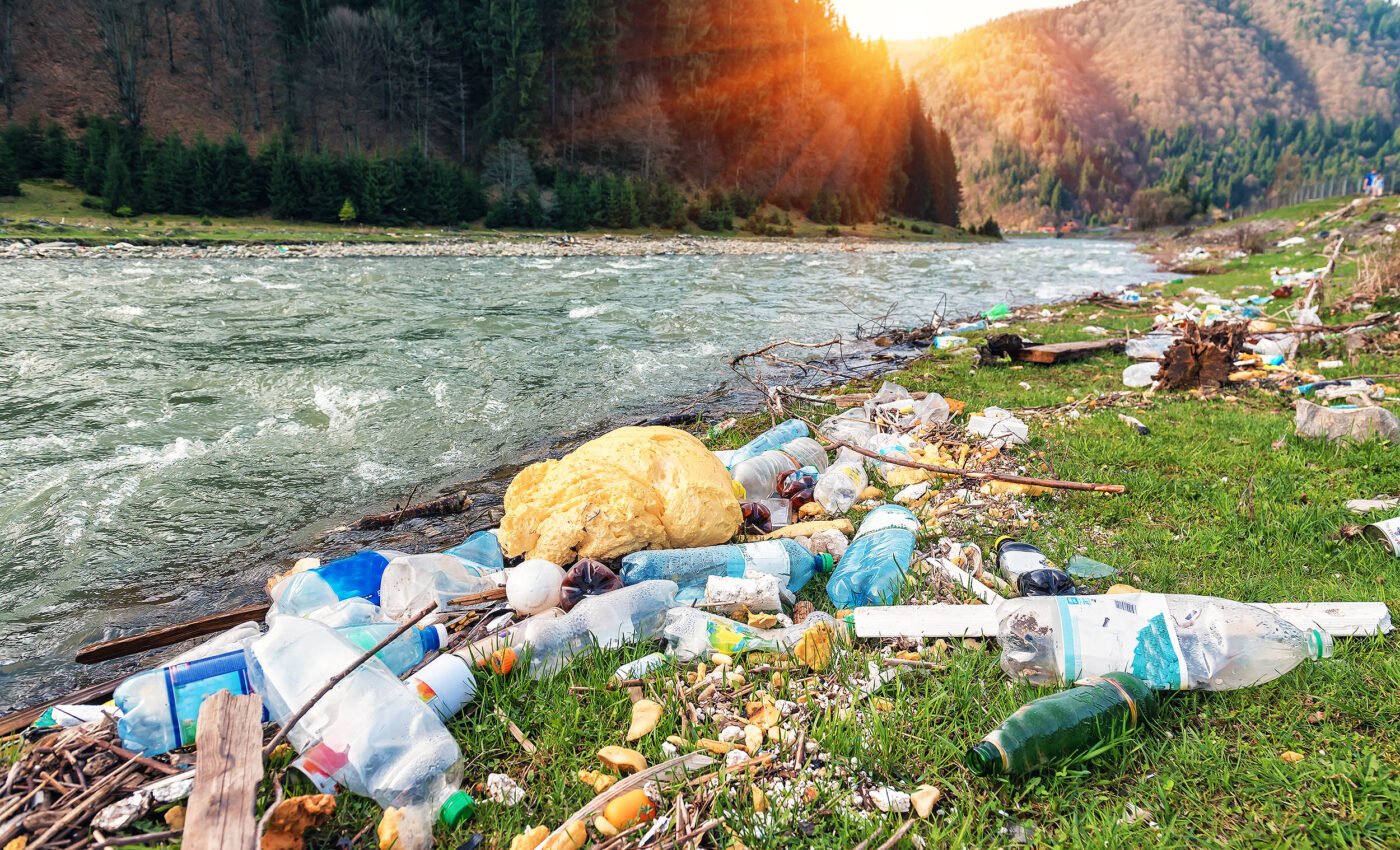
Major plastic pollution lurks beneath the surface of rivers
The sight of plastic pollution in rivers is unfortunately all too familiar. Images of bottles bobbing along the surface or plastic bags snagged on branches are emblematic of a growing environmental crisis. However, the problem runs much deeper — literally.
A significant portion of plastic pollution in our rivers is invisible to the naked eye, consisting of microplastics and fragments that sink beneath the surface.
This hidden reality has significant implications for our understanding of the problem and our ability to address it effectively.
Microplastics and nanoplastics lurking below
While larger plastic items like bottles and bags are easily visible and recognizable as pollutants, the majority of plastic pollution consists of less conspicuous forms. Microplastics, tiny particles less than 5 millimeters in size, are a major contributor to this problem.
These particles originate from various sources, including the degradation of larger plastic debris over time, microbeads intentionally added to personal care products, and fibers shed from synthetic clothing during laundry.
Due to their small size, microplastics often evade detection and can be easily ingested by aquatic organisms, accumulating within the food chain.
Larger plastic debris sinks to river bottoms
Larger plastic items can also become submerged, posing a hidden threat to aquatic ecosystems. This occurs due to several factors.
The density of the plastic material itself plays a role, with denser plastics sinking more readily. The shape of the object also influences its buoyancy, as irregular shapes can trap air and temporarily prevent sinking.
Additionally, the presence of biofilms can significantly alter the fate of plastic debris. Biofilms are complex communities of microorganisms that can colonize plastic surfaces, increasing their weight and causing them to sink.
Once submerged, these plastics can interact with the benthic environment, potentially impacting sediment composition, oxygen levels, and the organisms inhabiting the riverbed.
Furthermore, submerged plastics can leach harmful chemicals into the water, further compromising water quality and ecological balance.
Plastic pollution in rivers
A study led by James Lofty, a Ph.D. researcher at Cardiff University’s School of Engineering, has shed new light on the behavior of sinking plastics in rivers.
Lofty and his team conducted a series of experiments in which they released over 3,000 plastic items into large water channels designed to simulate real-world river conditions.
Using high-resolution cameras, they tracked the movement of these plastics, uncovering surprising findings. Contrary to previous assumptions, plastic fragments don’t always sink in a uniform manner.
Their orientation can change as they descend, significantly impacting their sinking speed and ultimately their distribution within the river.
“In our study, we demonstrate how plastics sink in different orientations. This significantly changes how fast a particle sinks. Previously it was thought that plastics always find a stable sinking orientation and therefore sink at a constant speed,” explained Mr. Lofty.
“However, we’ve shown this is not the case for plastics which are fragmented and fractured. This is important, as the sinking rate of a plastic particle is essential for understanding its transport. This finding significantly changes our understanding of how plastics move in rivers,” Lofty continued.
This new understanding has far-reaching implications for how we quantify and manage plastic pollution in our waterways.
Tracking rivers invisible plastic pollution
The research team leveraged their experimental findings to advance their understanding of plastic pollution dynamics in rivers.
They integrated their newly acquired knowledge about the varying sinking behaviors of different plastic types into established physics-based equations that were initially designed for sediment transport prediction.
This integration involved adapting the equations to account for the unique characteristics of plastic debris, such as its density, shape, and size distribution.
By incorporating these plastic-specific parameters, the researchers developed a refined model that can quantify the transport and distribution of submerged plastic pollution in rivers with a high degree of accuracy.
This model offers a valuable tool for assessing the extent of plastic pollution in aquatic environments and informing targeted mitigation strategies. “Our method can be used in any river on account of it using this very well-known equation also used for sediments,” noted Mr. Lofty.
This innovative approach overcomes the limitations of previous methods, such as underwater cameras and sonar, which are impractical for widespread use in rivers.
The path forward
The study’s findings underscore the importance of taking a comprehensive approach to tackling plastic pollution. We can no longer focus solely on the visible debris floating on the surface. The invisible plastics lurking beneath demand our attention as well.
By understanding the full scope of the problem, we can develop more targeted and effective solutions. This includes not only cleaning up existing pollution but also preventing more plastic from entering our rivers in the first place.
This will require a multi-pronged approach, encompassing everything from improved waste management practices to innovative materials and technologies that reduce our reliance on single-use plastics.
The research by Lofty and his team is a crucial step in this ongoing battle. By unveiling the hidden world of sinking plastics, they have empowered us with the knowledge and tools we need to protect our rivers and the delicate ecosystems they support.
The study is published in the journal Water Research.
—–
Like what you read? Subscribe to our newsletter for engaging articles, exclusive content, and the latest updates.
Check us out on EarthSnap, a free app brought to you by Eric Ralls and Earth.com.
—–













